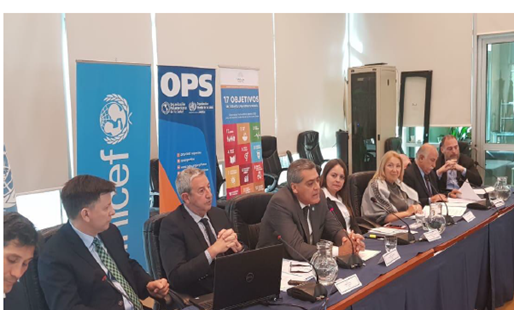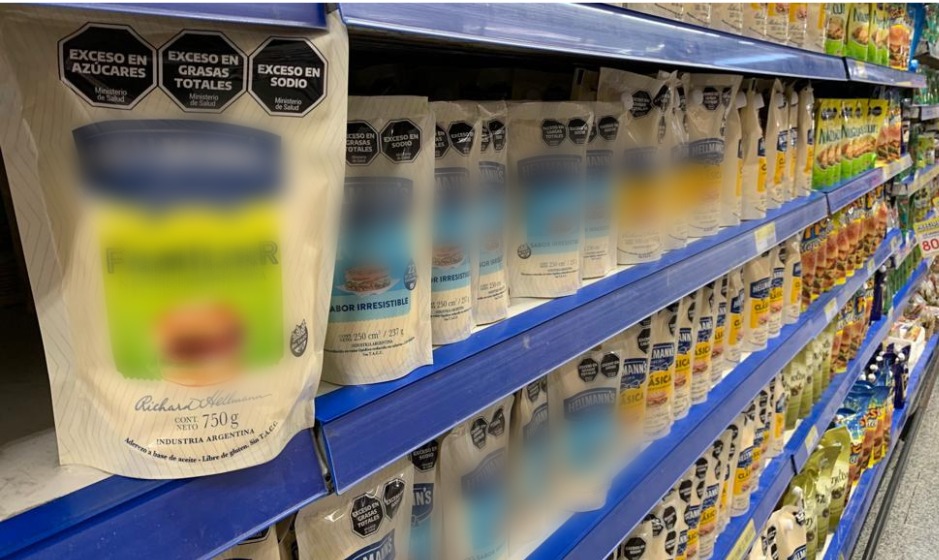World Health Organization
From Mandate to Implementation: Operationalizing National Multisectoral Governance for NCDs in Kuwait
Multisectoral Action
17 Dec 2025
World Health Organization | 15 Feb 2024
Argentina has a growing prevalence of overweight and obesity associated with unhealthy diet- related diseases affecting all age groups 1. This has led to increased morbidity and mortality. The nutritional transition is largely driven by the increased demand and supply of processed and ultraprocessed foods which are easily available in the country. To address this situation, PAHO/ WHO Argentina, together with the Regional Office, supported the national authorities in Argentina to develop, adopt and implement healthy eating legislation (Law 27 642), incorporating best practices on front-of-package warning labels and adopting the food classification tools agreed by PAHO/WHO Member States 2, 3. This legislation also safeguards the policy space from conflicts of interest and interference from industry, ensuring practical sustainability and maintaining vigilance with regard to front-of-package labelling standards. After the law’s adoption in December 2021 and with support from PAHO/WHO to ensure its implementation, as of September 2022 octagonal front-of-package labels are now visible which cite excess levels of sugars, sodium, fats and additives so that consumers have the information they require before making their choices.
How did Argentina, with the support of the PAHO/WHO Secretariat, achieve this?

In Argentina, the body weight of more than 65% of the population over 18 years of age is excessive according to the latest National Survey of Risk Factors in 2018, with more than 25% of the population being obese: this represents a 75% increase since 2005 4. Similarly, 13% of children aged under five years and 40% of adolescents aged between 13–15 are overweight, according to the World School Health Survey conducted in Argentina in 2018 5, 6. Such expressions of malnutrition are mostly driven by the rising demand for and offer of processed and ultraprocessed products of excessively high sugar, sodium and fat content, and containing additives such as sweeteners that disrupt healthy diets and cannot be easily identified by people at the time of purchase.
Front-of-package warning labels can facilitate change in consumption patterns, allowing consumers to identify the risks present in certain foods. They can also assist national authorities to apply other regulatory measures such as marketing restrictions and regulations around the school food environment and public food procurement.

To advocate for change, PAHO/WHO Argentina established a strategic alliance with the Directorate of International Affairs of the Chamber of Deputies of Argentina in 2017 to convene several forums with legislators and parliamentary advisors to share evidence and international experience on front-of-package labelling. These topics also included taxation on sugary drinks and regulations for the marketing of unhealthy food commodities, along with other regulatory policies that are part of PAHO/WHO’s Plan of Action for the Prevention of Obesity in Children and Adolescents 7. PAHO/WHO Argentina also partnered with the Ministry of Health (MoH) and UNICEF, and facilitated experience sharing from Chile during the parliamentary gatherings. Such meetings were repeated annually, adding further experiences from other countries, and sharing additional evidence.
These actions enhanced the recognition of PAHO/ WHO Argentina as a reference for legislators and parliamentary advisors drafting bills to advance such policy tools. Several bills emerged from the process, including opposing ones. Ultimately, however, the support provided by PAHO/WHO Argentina through evidentiary and practical experiences was instrumental in gathering parliamentary consensus across political groups.
This law plays a fundamental role in “ informing and warning consumers of the excess presence of critical nutrients in products, and thus prevent malnutrition and reduce the development of chronic noncommunicable diseases.” - Senator Fernández Sagasti
As the bill advanced through the legislative process, several hearings were held by parliament in the presence of legislators and members of academia, civil society and industry. Both the Argentina Country Office and the PAHO/WHO Regional Office participated in all these hearings, providing advice and clarification. PAHO/WHO also joined efforts with UNICEF and FAO in Argentina to launch a campaign on social media in support of a policy that could help consumers easily identify products – through the use of octagonal warning labels – that could harm their health.
Thanks to targeted advocacy, strategic partnerships with national legislators, public health authorities and UN agencies, and the citation of reliable evidence, the legislative process culminated in legal adoption of the bill in December 2021 2. PAHO/WHO Argentina further contributed to the development of regulations to set out technical specifications to implement the law and continues to advise national authorities on implementation, monitoring and enforcement.
The maximum values of sugars, saturated T“ fats, total fats and sodium established must comply with the limits of the Nutrient Profile of the Pan American Health Organization.” -Law 27 642 2
PAHO/WHO’s support throughout this journey has enabled Argentina to adopt a law with effective policy instruments (No 27642) which meets PAHO/WHO best practices and in which the time between policy adoption and implementation was shortened 8, 9. As of September 2022, the population of Argentina can now easily identify products that are harmful to health and, once implementation of marketing and school food environment regulations is completed in the coming years, children will also be protected from such commercial practices. Based on the experiences of other countries in the region, we expect to see consumers making healthier choices, with long-lasting effects on healthy diets, improved nutrition and health outcomes.
“This impact story was published as part of the WHO country stories: delivering for all report, which presents a snapshot of how WHO has delivered on its mission in countries and contributed to health outcomes across a wide range of issues during 2022-2023.”